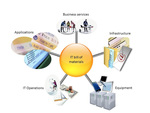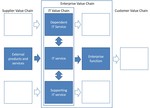3 minute read
There is quite a lot written about IT consolidation and centralisation.
Best practice in business operations includes concepts such as having a “single source of the truth” to help understand and serve customers or make key business decisions. These sorts of concepts imply some centrally managed shared IT.
Enterprise architects strive to understand, model and design business structures and supporting IT spanning whole enterprises. IT concepts and technologies such as Service Oriented Architecture and Cloud Computing are justified on the principles of maximising scale and re-use.
Procurement specialists seek to rationalise suppliers and consolidate purchases for all categories of spend including IT products and services. Suppliers offer price and other inducements for sole supplier status.
For a long time ERP suppliers have promoted their ability to provide a single, integrated solution to the needs of large businesses.
For relatively small organisations a single, enterprise-wide perspective on IT is quite realistic. For large organisations, particularly those which operate on a truly global scale, the reality is a lot more complex.













